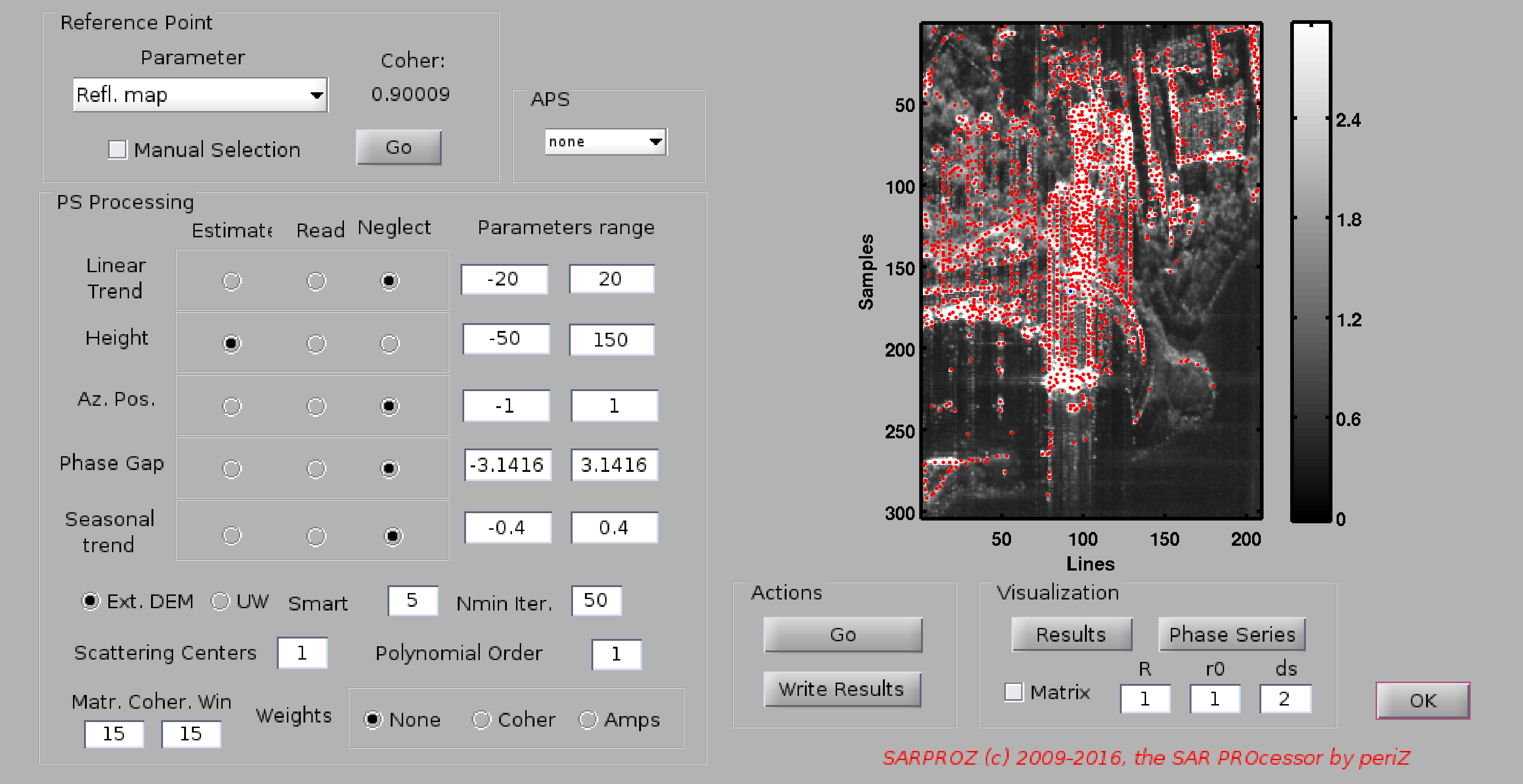
Help for Small Area Sparse Points Multi-Image InSAR Processing Module
This module performs Sparse Points Multi-Image InSAR processing for a small area.
Which points to process has to be previously chosen by means of the Amplitude Analysis module.
Reference selection/ APS compensation
The PS processing module allows to choose a Reference point by selecting a parameter to maximize.
The Reference point is plotted in blue color on the reflectivity map.
If the parameter is left empty, a best choice is applied considering the interferograms derived by the current Images Graph.
Then, whether to compensate for the previously estimated APS can be chosen.
In alternative, one can decide to compensate for the error introduced by the noise of the reference point.
Phase processing
After chosing reference point and APS compensation, phase time series are analyzed.
Five parameters can be either estimated, or compesanted for (if previously estimated) or neglected:
-Linear trend
-Height
-Azimuth Position (in case of Doppler Centroid variability)
-Phase Gap (in case of different carrier frequencies)
-Seasonal Trend
Moreover, the external DEM can be subtracted from the phase series by flagging "a priori DEM".
Phase time series are generated according to the images graph selected in the Main window
(star graph with a unique Master image, or MST, or Full Graph...)
Phase time series can be weighted by means of the spatial coherence of corresponing interferograms
by flagging "weights". If interferograms are not available, the coherence matrix is processed.
Finally, the processed results can be plotted ("Show Results"), together with Phase Time Series ("Phase Series").
The results can be written in the corresponding full site matrixes with "Write Results".